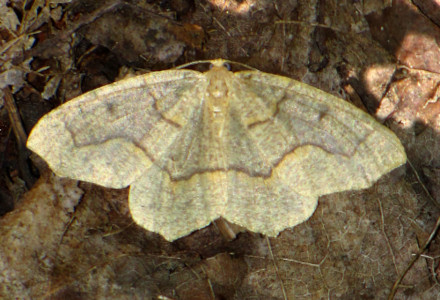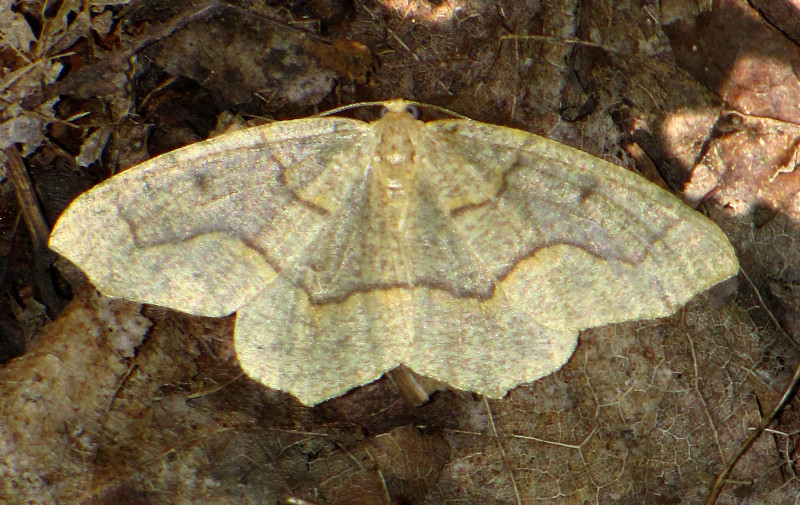Hemlock Looper Facts
- This delicate marvel of Nature, an excellent example of native Lepidoptera, most frequently goes by the common name of the Hemlock Looper. The invertebrate also has another, though less used common name. That’s the term of the mournful thorn.
- Professionals, however, typically refer to it by yet another name. That’s the technical name for the small species. Unfortunately, however, like many such terms, its’ rather hard to pronounce. That’s due to the fact that it’s also called the Lambdina fiscellaria.
- The respected French entomologist, Achille Guenée, assigned this tonge-twisting formal name. He made the first known official recognition of the insect as a separate and distinct species. This scientifically noteworthy event further occurred in 1857.
- Regrettably, though, in some parts of its native range, it’s viewed as a serious pest. That holds true due to the feeding habits of its caterpillar form. When present in sufficient numbers, these pose a serious threat to several varieties of trees in local area.
- For the moment, this impressive invertebrate appears to be maintaing a population base that’s both sizeable and stable. This also seems to hold tue throughout the entirety of its natural range. The IUCN, therefore, presently has no listing for it on its Red List.
- The Hemlock Looper nevertheless should be considered as facing several threats to its continued existence. Habitat loss, chiefly due to human activities, naturally constitutes a potential danger. Its greatest threat, however, comes from climate change.
Related Articles
Hemlock Looper Physical Description
The appealing Lepidoptera known by the attention-grabbing common name of the Hemlock Looper garners some attention due to its dietary habits, to be sure. Yet the remarkable insect also merits its own degree of appreciation due to its sheer visual appeal, too.
It further manages to earn a certain degree of appreciation for its natural beauty alone. Its physical size isn’t a factor in that particular aspect. That’s because it remains only an average-sized specimen of its kind, unlike some giants, like the Giant Atlas Moth.
More specifically, mature adults of the species possess an average wingspan of roughly 1.4 in (3.5 cm). Exceptional individuals do occur occasionally, of course. These uncommon specimens, however, rarely exceed this measurement by more than a small fraction.
Unlike many of its relatives, though, the Hemlock Looper displays no noticeable degree of the physiological characteristic of sexual dimorphism. This lack of distinguishing traits between the genders further includes both sheer size and physical appearance.
Adults of both genders therefore present the same general pattern of colors, as well as size. This principally manifests as a cream colored background over most of the body and wings. Thin, dark lines, however, generally also cross both the forewings and hindwings.
- Kingdom: Animalia
- Phylum: Arthropoda
- Class: Insecta
- Order: Lepidoptera
- Family: Geometridae
- Genus: Lambdina
- Species: L. fiscellaria
Hemlock Looper Distribution, Habitat, and Ecology
Fortunately, both for the Hemlock Looper itself, and those of us who appreciate Nature, it evolved as native to a relatively wide section of the globe. That’s due to the fact that the Arthropod evolved as native to much of the continent of North America.
Within that vast area, though, its range extends as far north as the southern portions of the country of Canada. From there, it makes appearances throughout the United States. The range of the small moth does not, however, extend into the country of Mexico.
In both of the countries on the continent that it does appear in, though, the great majority of its numbers tend to live in the eastern half of the continent. In all regions, however, the creature typically makes its home in areas of either coniferous or deciduous forests.
Although the caterpillar froms feed on virtually every variety of tree in their habitat range, they do show certain preferences. As the common name implies, though, these show a strong preference for hemlock trees. Yet they consume most others, as well as some shrubs.
Other than hemlock trees, the favorite food sources of the caterpillar form includes such indigenous tree species as white spruce, oak, and balsam fir. The mature adults, meanwhile, like many of their relatives, feed on the nectar of various local plant species.
The adult Hemlock Looper typically flies between August and early October, in most instances. After mating, the female lays large numbers of eggs, usually either in small groupings, or even singly. These she further places on bark, twigs, foliage, or even debris.
Species Sharing Its Range
Check out our other articles on 7 Spectacular Indonesian Species, Texas Blind Salamander, Lake Hillier, Reef Manta Ray, Nepenthes pervillei, Black-and-white hawk-eagle, Rainbow Snake


